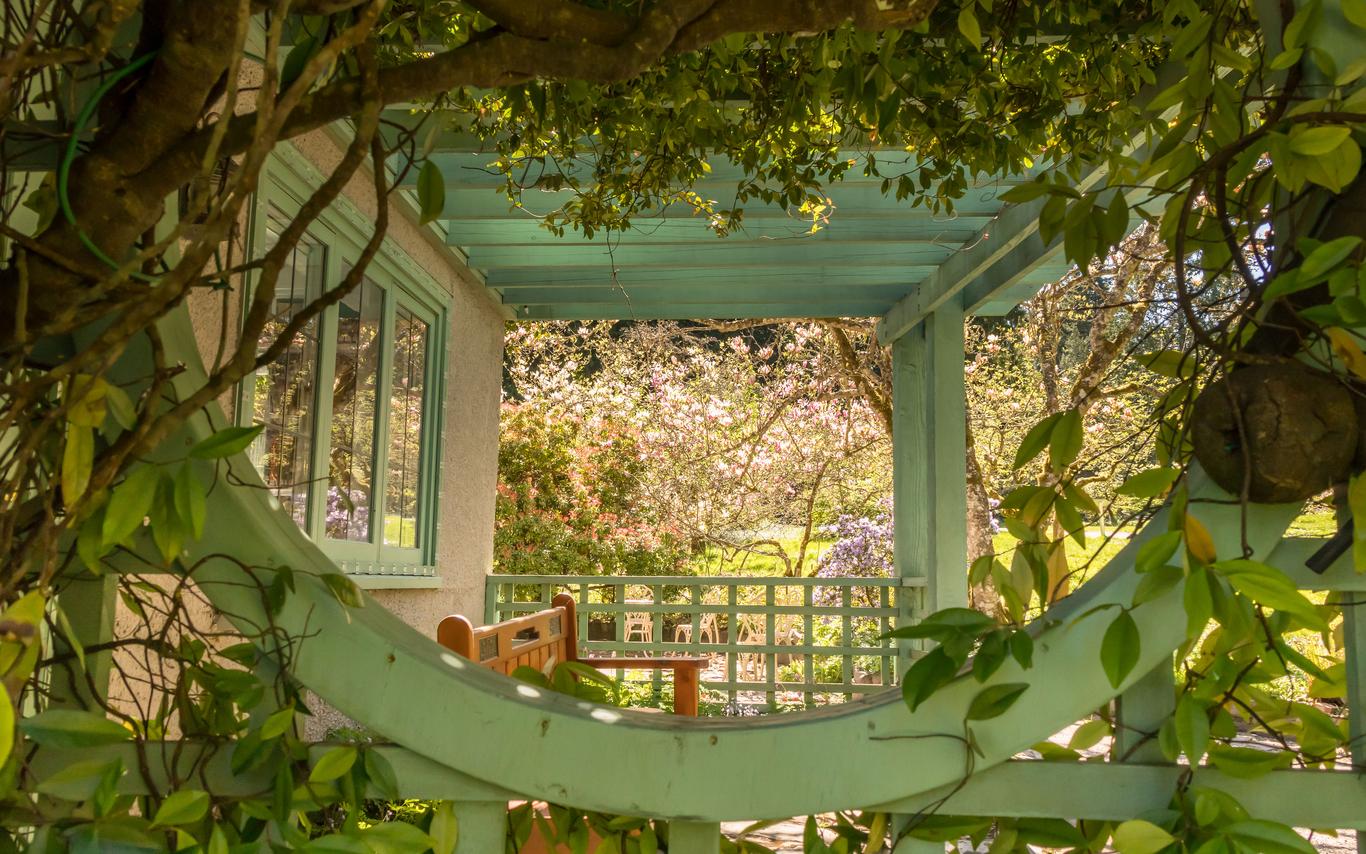Latin name: Chaenomeles speciosa
by Vancouver Island Master Gardeners Association
Chaenomeles speciosa is a deciduous shrub with a vigorous sprawling growth habit. Belonging to the Rose family, it is a native of China and Tibet. This spiny, thin branched shrub is grown for its early Spring blooms which appear before the leaves. The crimson flowers lend a splash of color in the emerging garden and can be enhanced by an underplanting of Spring bulbs. The blooms are followed by shiny, dark green leaves. Several cultivars have been developed to give variations in bloom color of white, pink, orange and red.
Chaenomeles X superba (C. japonica X C. speciosa) cultivars grow in a more rounded shrub form with a longer period of bloom and choice of colors. Older shrubs produce hard, yellow- green “quinces”. This fruit can be ripened and used in jellies. It blooms on old wood, so no pruning to shape until after the flowering period. It is most attractive when trained against a fence or trellis.
This specimen at Milner Gardens can be found against Milner House on the north (ocean) side.
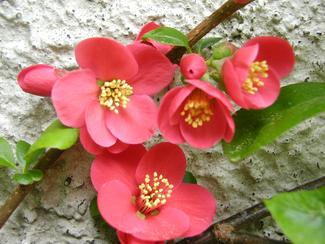
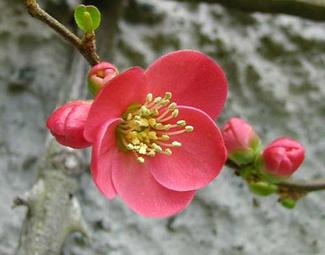
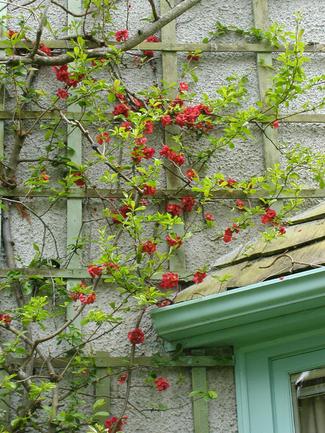
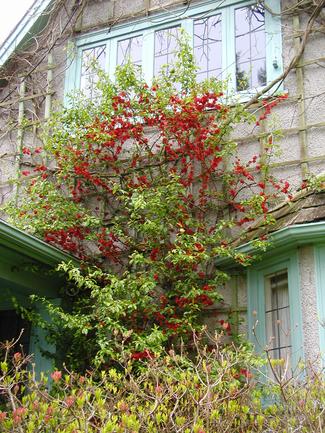
Photos courtesy of Milner Gardens & Woodland.
Attribute | Description |
|---|---|
Form: | A spindly, sprawling shrub which can form a thorny barrier or be trained against a support. |
Foliage: | Glossy, dark green leaves. The simple, toothed leaves are alternately arranged on the stem. 4 – 9cm. |
Height/Width: | Matures to 2.5 metres by 5 metres if unpruned. |
Hardiness Zone: | Zone 5 to 9. |
Exposure: | Best bloom and fruit in full sun but will tolerate light shade. |
Flower colour: | Flowers are 5 petalled, cup shaped. 5cm. Cultivars range in shades of red, orange, pink and white. |
Leaf colour: | Dark green. |
Flower time: | Early spring. |
Preferred soil and Watering: | Prefers moderately fertile, well- drained soil. Moderate water. Mature plants will tolerate drought. |
Other: | Prone to fireblight, canker and scale. Genus name comes from the Greek words chaino meaning to gape and melon meaning an apple, in the incorrect belief that the fruits split open. |
